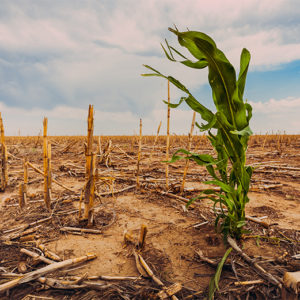
Deprived of sunlight, plants are unable to transform carbon dioxide from the atmosphere into sugars. They are essentially starved of one of their most important building blocks.
The plant’s not-so-secret weapon to combat this and other scarcity is autophagy. Similar to recycling, autophagy helps break down damaged or unwanted pieces of a cell, so that building blocks can be used again.

New research from Washington University in St. Louis shows that plants that lack the core components for autophagy have to get creative about recycling nutrients like carbon when they’re left in the dark.
The study led by Richard Vierstra, the George and Charmaine Mallinckrodt Professor of Biology in Arts & Sciences, was conducted with maize (commonly referred to as corn), an important crop plant, and is published in The Plant Cell.
“Maize is a fast-growing plant, and nutrient homeostasis is particularly important to sustain this rapid growth,” said Fionn McLoughlin, first author of the study, who completed this work as a postdoctoral fellow at Washington University.
“We were quite surprised about the amount of specific responses that occurred in the autophagy mutants in response to fixed carbon starvation,” he said.
Using maize grown with or without the autophagy-related gene ATG12, the researchers wrapped the plants’ leaves in foil to shield them from light. Then they used state-of-the-art tools to compare and analyze the transcriptome, proteome, metabolome and ionome from the maize. The researchers recorded changes in metabolites related to amino acids, carbohydrates and nucleotides.
“Altogether, we were able to create an in-depth overview of the most important processes that occur during leaf darkening,” Vierstra said.

“In particular, the upregulation of alternative catabolic processes — including proteinases and phospholipases together with the adjustments in alternative respiratory compounds — really increased our understanding on the importance of autophagic turnover and the maintenance of available energy sources,” McLoughlin said.
In a previous study, Vierstra and McLoughlin studied what happens when maize is starved of nitrogen, another important macronutrient.
“In addition to being important for the production of different metabolites, it is also interesting to see how autophagy mediates the transport of nitrogen, which is obtained in the roots, and carbon, which is fixed in the leaves,” McLoughlin said.
“Understanding how autophagy controls nutrient use efficiency is important for developing new strategies to grow crops using less or alternative resources,” he said. “In addition, we could potentially alter the protein or oil content of crop species, making them more nutritional and/or profitable.”



